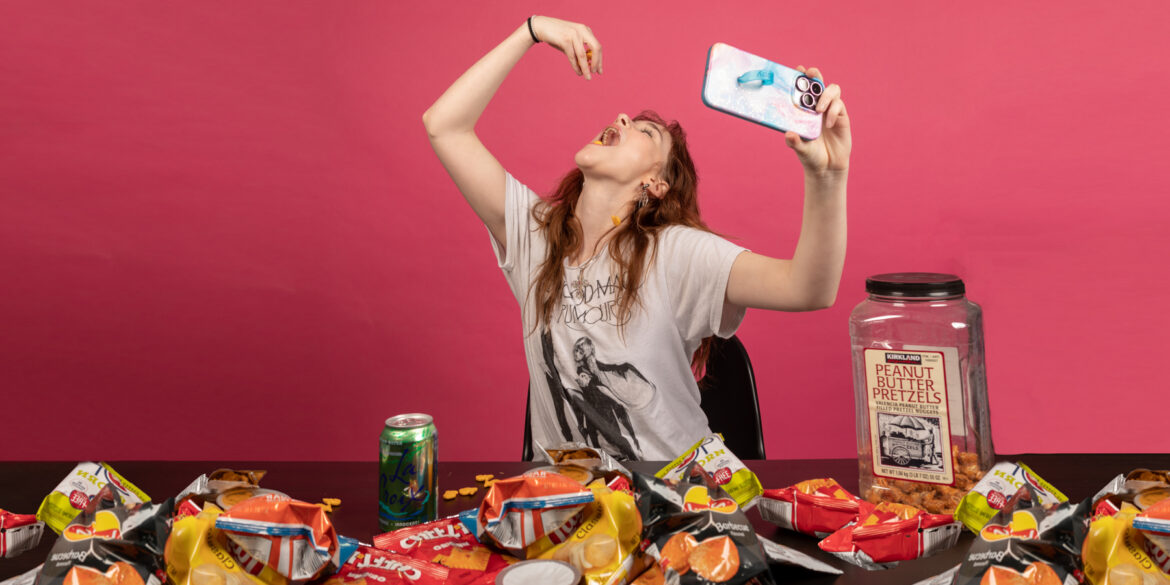Mukbang. You might have heard the word before or come across a video online without realizing what it was. So what is mukbang? Started in South Korea in 2010, the word is a portmanteau of meokja and bang-song. Meokja 먹자 means ‘eat,’ while bang-song 방송 means ‘broadcasting.’ Combined into one word, ‘mukbang’ 먹방 (pronounced meok-bahng), you get ‘online broadcasts of people eating food.’
How did mukbangs start? In South Korea, most people eat out with coworkers or friends. Prior to when mukbangs started, it had always been rare for people to eat alone. However, as more people began living on their own as they entered their adult lives, they would get lonely while eating meals by themselves. To fix this, people would start to stream themselves on the site AfreecaTV while eating their food. People could join the live streams in real-time, send messages to the streamers, and donate money to their favorite streamers. In time, as mukbangs became more popular globally in 2014, people started to shift to posting their mukbangs on Youtube.
How did posting mukbangs become such a popular trend? To start, it coincided with the Hallyu Wave, when parts of Korean culture spread worldwide. The Hallyu Wave has been happening since the 1990s, but it propelled to new heights after Psy’s Gangnam Style video went viral in 2012. More people began looking into Korean artists and their music, Korean dramas and movies, and even Korean cuisine. As mukbang videos from streamers in Korea became more popular abroad, individuals from all over the world began hopping on the mukbang trend by making reaction videos to them. Then, content creators began to make their own mukbang videos. In the US, this included a mukbang reaction video with almost 7 million views by the Fine Bros in 2015 and, released only a couple of days later, a mukbang video by Trisha Paytas that has racked up 2.5 million views.
You wouldn’t believe me if I told you how much money you can make from being a mukbang streamer. As mentioned above, audience members can donate money to their favorite streamers on sites like AfreecaTV or Twitch. On Youtube, streamers get money from ads, sponsorships, and endorsements. One mukbanger, Bloveslife, AKA Bethany Gaskin, has made a whopping one-million dollars through advertisements on her videos, according to the New York Times. As you can tell, it’s become a lucrative and very legitimate business.
There are several types of mukbangs. The first kind is the traditional ASMR mukbang, which features the streamer eating food. ASMR is an autonomous sensory meridian response, which triggers goosebumps or chills running down your spine when hearing certain sounds. There isn’t a lot of dialogue in this type of mukbang, with the only sounds being the noises the streamer is making while eating. Many people will turn on ASMR mukbangs when trying to go to sleep, as the sounds in the video soothe them. Another kind of mukbang video that has become more popular globally is the mukbang storytime. This shows the streamer talking about an event that happened in their life while eating food. Finally, an alternative popular mukbang style involves bringing on a guest to talk and eat with the streamer, where they are interviewing each other throughout the video.
Here are five mukbang creators’ most popular videos to get started as you go down the mukbang rabbit hole. And who knows? Maybe we’ll be tuning in to your mukbang next.




